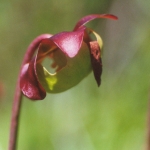

|
|
|
|
|
|
|
|
|
|
Don't take if you: Are pregnant, think you may be pregnant, or plan pregnancy in the near future. Consult your doctor if you: Pregnancy: Don't use unless prescribed by your doctor. Breastfeeding: Don't use unless prescribed by your doctor. Infants and Children: Treating infants and children under 2 with any herbal preparation is hazardous. Others: None are expected if you are beyond childhood, under 45, not pregnant, basically healthy, take it only for a short time and do not exceed manufacturer's recommended dose. Storage: Safe Dosage: Consult your doctor for the appropriate dose for your condition. |
|
Vitamins, Herbs, Minerals & Supplements The Complete Guide by H. Winter Griffith, MD Copyright©1998 Fisher Books pg 414 |